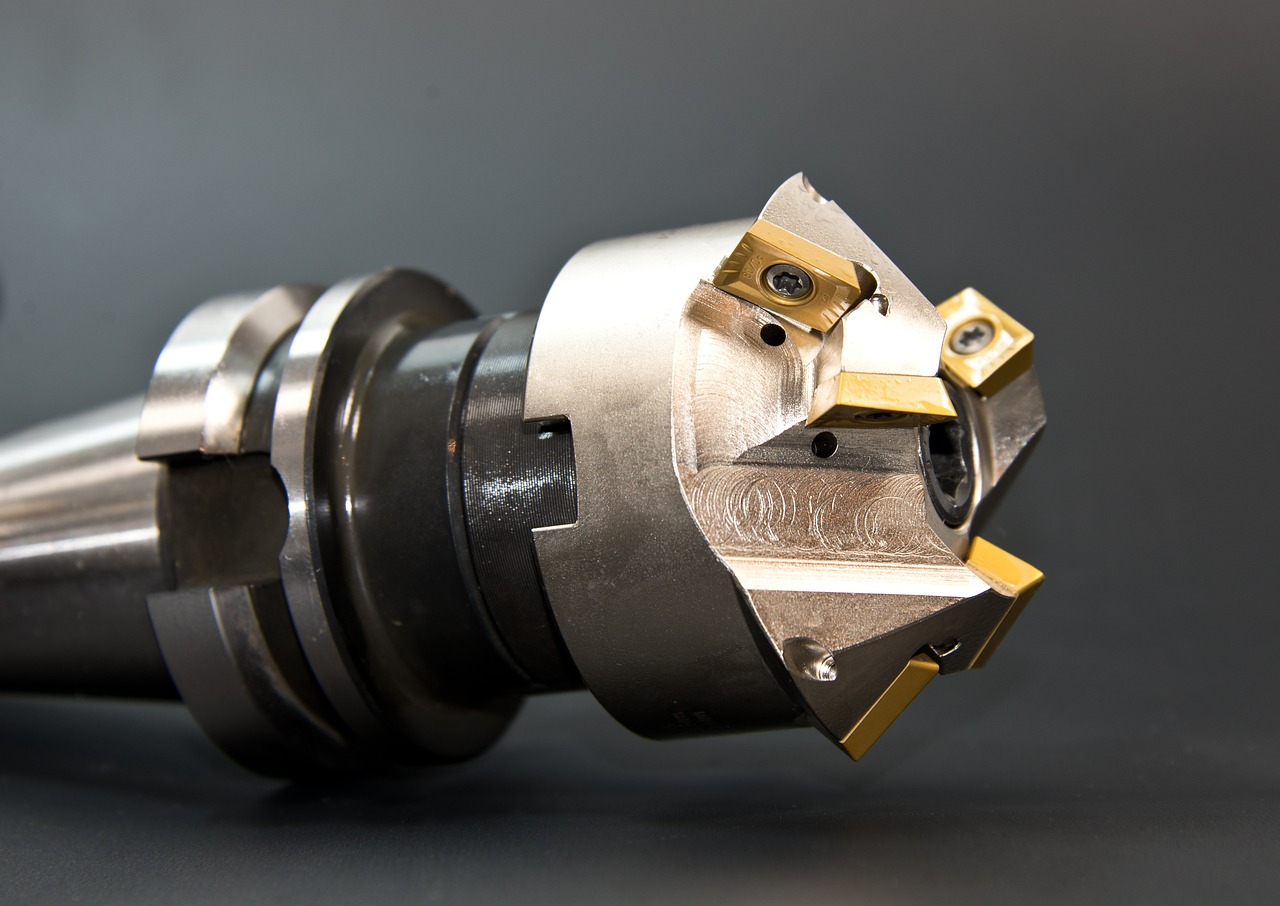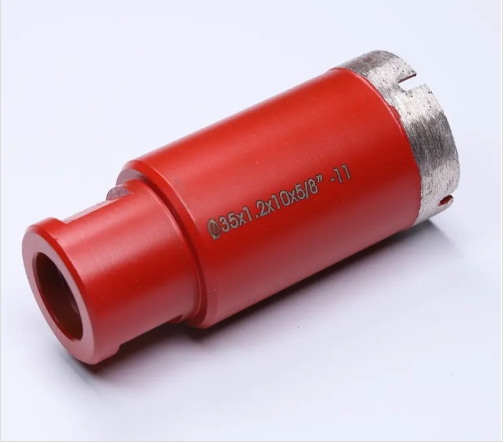For Every Drilling, Cutting, and Polishing
Views: 0 Author: Site Editor Publish Time: 2025-05-19 Origin: Site









Drilling porcelain tiles can be tricky. Have you ever wondered if faster drilling could lead to cracks or faster results? The speed at which you drill porcelain plays a key role in the quality of the outcome.
In this post, we’ll discuss the ideal drilling speeds for porcelain tiles. You’ll learn why using the right porcelain tile drill bit can make all the difference in your project’s success.

Porcelain is a dense, durable ceramic material often used in tiles, countertops, and bathroom fixtures. Its smooth, glass-like surface is attractive but tough to work with.
Porcelain’s hardness is measured on the Mohs scale, where it ranks around 7 out of 10. This means it is tougher than many materials commonly drilled, like wood or plastic. Drilling through porcelain requires specialized tools because of its resistance to breaking and chipping under pressure.
The high hardness makes drilling a delicate balance. Too much force or heat can cause the porcelain to crack. That's why the right drill bit and speed are essential to avoid damaging the material.
Regular drill bits aren’t suited for porcelain. They can wear out quickly and often result in broken tiles. Porcelain tile drill bits are specifically designed to tackle this challenge.
These specialized bits are often diamond-coated or carbide-tipped. The diamond coating ensures durability, while carbide tips provide extra strength for cutting through the tough surface. These materials help reduce friction, which minimizes heat build-up that could otherwise cause tiles to crack.
What sets porcelain tile drill bits apart is their unique design. For example, many have a spear-point shape, which helps drill smoothly through the hard surface without the need for excessive pressure. With the right porcelain tile drill bit, you can achieve precise, clean holes without risking damage to your tiles.
Drilling too fast can lead to a range of problems. The most common risk is overheating, which can crack or damage the porcelain surface. When drilling at high speeds, friction builds up between the porcelain tile drill bit and the tile. This heat can cause thermal stress, resulting in visible cracks or chips, especially on harder porcelain tiles.
Additionally, high speeds without proper cooling can lead to micro-cracks. These tiny fractures often go unnoticed but can weaken the tile over time, leading to premature breakage. This is why using cooling methods like water or self-cooling drill bits is crucial when drilling at high speeds.
On the other hand, drilling too slowly presents its own set of issues. First, using slow speeds can lead to excessive wear on the porcelain tile drill bit. The bit doesn’t clear material as efficiently, which increases the friction, resulting in faster dulling of the drill bit.
Slow drilling also impacts the efficiency of the job. It takes much longer to complete each hole, which can be frustrating, especially in large projects like tiling floors. Additionally, using non-specialized drill bits, such as glass or wood drill bits, at low speeds can cause poor results. These bits are not designed for porcelain’s dense structure, making them ineffective and prone to failure when drilling through hard materials.
When drilling porcelain tiles dry, a speed range of 800-1200 rpm is ideal. At this speed, using a porcelain tile drill bit equipped with self-cooling or vacuum brazed diamond technology is most effective. These drill bits are specifically designed to manage heat build-up and prevent the tile from cracking due to excess friction.
ZHUOSHI vacuum brazed drill bits are a great choice for dry drilling. Their self-cooling features allow the drill bit to stay cooler while cutting through hard porcelain, ensuring a smoother drilling process. The diamond grain size, typically around 40/50#, plays a significant role in this efficiency. This grain size increases the speed of drilling by up to 30%, allowing you to complete the job faster without compromising quality.
For wet drilling, a higher speed range of 1500-2000 rpm is recommended. Wet drilling involves the use of water cooling, which helps keep both the drill bit and tile cool. This reduces the chance of overheating and ensures the longevity of the porcelain tile drill bit.
Water cooling is particularly beneficial because it helps prevent the tile from cracking during drilling. It also enhances the drill bit’s lifespan by reducing friction. Many high-quality porcelain tile drill bits, such as those with M14 & 1/2GAS threads, come equipped with water-cooling systems. These systems are designed to minimize tile chipping and improve overall drilling efficiency at higher speeds.
For beginners using basic tools, drilling porcelain requires slower speeds. A speed range of 200-500 rpm is ideal for DIYers. This lower speed ensures you can maintain consistent pressure without overwhelming the material. Using water cooling during the process helps reduce friction and keeps both the drill bit and tile cool.
Porcelain tile drill bits are essential for DIY tasks. Standard drill bits often cause chipping or breakage when used on porcelain. Non-specialized drill bits aren’t designed for this dense material, which can lead to poor results. Always choose a bit specifically made for porcelain to avoid frustrating, costly mistakes.
Experienced professionals should aim for faster speeds when drilling porcelain. For high-efficiency drills, a speed range of 1200-2000 rpm is recommended. These faster speeds help complete installations more quickly without sacrificing quality.
High-quality, specialized porcelain tile drill bits are the key for professionals. Bits like ZHUOSHI’s vacuum brazed diamond drill bits ensure smoother, faster drilling with fewer risks of tile damage. These bits are built to handle higher speeds and offer more durability than standard drill bits, making them ideal for large-scale or commercial installations.

When drilling porcelain tiles, it's important to use the right drill. Both cordless and corded drills can work, but for larger or more intensive jobs, a corded drill might provide more consistent power. Impact drills are not recommended because they can cause cracking.
The porcelain tile drill bit you choose matters too. Opt for a bit designed specifically for porcelain, with the right size, design, and coating. ZHUOSHI's spiral chip-removal design is a great example. This design prevents the drill bit from clogging, even at high speeds, allowing for a smoother, more efficient drilling process.
When drilling porcelain tiles, always use low pressure and maintain a steady speed. Rushing or applying too much pressure can cause the tile to crack. If you're drilling larger holes, start with a small pilot hole. This guides the bit and reduces the chance of tile damage.
To avoid chipping, focus on controlling the speed and pressure. High-quality porcelain tile drill bits play a key role in this process. Bits like those from ZHUOSHI are designed to ensure clean cuts, even with delicate porcelain tiles, thanks to their precise construction and specialized coatings.
Overheating is one of the biggest risks when drilling porcelain. The heat generated during the drilling process can cause the porcelain to crack, especially if the tile is already hard or dense. High temperatures lead to thermal stress, which weakens the material.
To avoid this, always maintain proper drilling speeds and use cooling techniques. For dry drilling, self-cooling porcelain tile drill bits are ideal. When drilling wet, using water to cool the area is crucial to preventing heat build-up.
New Information: Drilling at high speeds without proper cooling systems, like water or self-cooling features, increases the risk of cracking, especially with harder porcelain varieties.
Using non-specialized drill bits can cause severe issues when drilling porcelain. For example, using glass or wood drill bits on porcelain tiles can cause the tile to crack or break entirely.
Porcelain tile drill bits are essential for drilling through tough porcelain tiles. They’re designed specifically for the task and allow for smoother, safer drilling.
New Information: ZHUOSHI diamond-coated bits are perfect for high-speed drilling without the risk of chipping, even on delicate porcelain surfaces. These bits are engineered to handle tough materials without causing surface damage.
Excessive pressure is a common mistake that can easily break the tile. Applying too much force can cause cracks, even if you're using the right drill and bit. It’s important to maintain a consistent, controlled pressure when drilling.
Best practices include letting the porcelain tile drill bit do the work. Avoid pushing too hard, and allow the bit to cut through the porcelain at its own pace.
New Information: Avoiding excessive pressure is especially important when using high-performance porcelain tile drill bits. These specialized bits are designed to create clean holes without damaging the tile or causing fractures.
Drilling porcelain tiles is a common task for professionals, especially in bathroom installations and flooring projects. High-quality porcelain tile drill bits are essential for ensuring clean, accurate cuts without damaging the tile.
For instance, in a recent bathroom renovation, a professional team used ZHUOSHI’s diamond-coated vacuum brazed drill bits to drill precise holes for faucets and showerheads. The project required high-speed drilling to meet tight timelines, and the use of high-performance bits ensured that there were no cracks or chips in the porcelain tiles.
New Information: ZHUOSHI has over 20 years of experience producing specialized porcelain tile drill bits, which are trusted by professionals for high-speed, efficient drilling in demanding projects.
DIYers often face challenges when drilling porcelain tiles, but with the right tools, the results can be just as flawless as professional work. One DIY enthusiast shared their experience of successfully drilling holes in porcelain tiles for a kitchen backsplash. Using a porcelain tile drill bit specifically designed for porcelain, they managed to complete the task without any cracks or chips.
In another case, a homeowner used ZHUOSHI’s M14 crown-segment drill bits with water cooling for a flawless result. The bit's high efficiency allowed them to drill at higher speeds without damaging the delicate porcelain, even when drilling through thick tiles.
New Information: User feedback highlights the advantages of ZHUOSHI’s M14 crown-segment drill bits. With water cooling, these bits prevent overheating and ensure smooth drilling, making them an excellent choice for residential projects.
When drilling porcelain tiles, the speed, tools, and technique you use all play a critical role. As we’ve discussed, using the correct porcelain tile drill bit is key to avoiding tile damage. Whether you choose high-speed or low-speed drilling depends on factors like the type of tile and whether you’re drilling dry or wet.
For dry drilling, slower speeds (800-1200 rpm) are recommended, especially when using self-cooling or vacuum brazed diamond drill bits. Wet drilling, on the other hand, benefits from higher speeds (1500-2000 rpm) to maintain precision while cooling the drill bit and tile.
New Information: The right tools make all the difference. ZHUOSHI’s vacuum brazed drill bits allow for faster drilling speeds, improving both the speed and quality of your work. By using these specialized bits, you can reduce the risk of cracks or chipping, even when drilling at higher speeds.
To achieve clean, crack-free porcelain tiles, invest in high-quality porcelain tile drill bits. The right speed and technique are crucial for success. Whether drilling fast or slow, use the correct tools to ensure smooth results and avoid tile damage. A porcelain tile drill bit designed for the task makes all the difference.
Add: No. 14-15,Building C38, No. 25 Road, Chenghui International, Xiamei Town, 362302, Nan'an City, Fujian Province, China.
Mobile/Whatsapp/Wechat: 0086-13675900041
Email: info@wanshintool.com jerry01983@qq.com